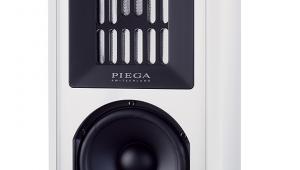Focal Kanta No3 Loudspeaker

 The latest – and largest – model in Focal's Kanta range combines its signature style with innovative materials
The latest – and largest – model in Focal's Kanta range combines its signature style with innovative materials
You might be tempted to see the Focal Kanta range as Utopia-lite: while the loudspeakers in what is now a three-strong lineup are one-piece designs, lacking the adjustable articulation of the flagship offering, they do echo the company's Utopia style [HFN Dec '18]. This is done by shaping the front baffle so that, in the £9000 Kanta No3 we have here, the two bass drivers are in a section of baffle sloping gently back from bottom to the midpoint where the tweeter is mounted, while the midrange driver at the top is slanted slightly downwards.
Viewed head-on the effect is almost imperceptible, but it's revealed when you take a three-quarter or side-on view of the cabinet, which also reveals the two-shade finish available on the speakers. Whichever finish you choose, the speakers are immaculately built and finished in the Focal factories, with drive units also engineered and assembled in-house.
Birthday Party
That's been a hallmark of the company throughout its 40-year history, which is being marked this year with celebratory special editions of some products, from an ultra-exclusive evaporated metal finish on one high-end model, in a production run of just four pairs, through to an exotically packaged headphone system and a limited edition car speaker offering.
The Kanta range kicked off with the Kanta No2 floorstander [HFN Jan '18], followed later by the No1 standmount [HFN Jun '19], and this larger No3 floorstander. Focal likes to see the speakers in terms of the rooms to which they are best suited: the No1, it says is good for rooms up to 25m2, the No2 for rooms of 25-40m2, and the No3 for rooms of up to 80m2.

The Kanta speakers have inherited two in-house driver materials for which Focal is highly regarded: the tweeter uses an inverted dome of beryllium while the rest of the drivers feature the company's Flax cones. True, Focal isn't the only manufacturer using beryllium for its tweeters, but it was one of the pioneers when most others were avoiding what is a tricky and potentially hazardous material.
Flax Return
The tweeter here is a 27mm design, using Focal's third-generation Infinite Acoustic Loading (IAL3) for control of rearward radiation, while the Flax drivers comprise a 16.5cm midrange unit above the tweeter, and two 21cm bass drivers below. The Flax drivers use a Tuned Mass Damper surround to manage resonances – first seen in the Sopra No2 [HFN Sep '15] – and the company's Neutral Inductance Circuit in the motor to linearise the magnetic field regardless of the voice-coil position.
Why Flax? Well, Focal legend has it that the company was looking for an alternative to paper for lower-cost driver cones still capable of high performance, and came across this natural material, best-known for its use in making linen fabric. The hollow nature of flax means it's half the weight of fibreglass, while its low elasticity is ideal for use in cones required to be rigid as well as light, and it also has good damping properties.
In the Focal cone, first seen in the Aria range, the flax is sandwiched between two thin layers of glass fibre, giving the driver its 'organic' look. The material is also much more ecological than the plastics or foams used in other drivers, and also has the benefit of not being prey to the fluctuations of global oil prices.
What's more, these drivers – first introduced in 2013 after five years of R&D – are now a proven technology, having been used in both the bargain Aria range and the previous Kanta models. And they have one more advantage for Focal: not only are the drivers made in France, the flax from which they are constructed is also grown nearby…
There's more innovation going on in the main shell of the cabinet which is moulded into shape from multiple plys of wood, thus removing unnecessary joins (and points of weakness) and increasing rigidity, while that sculptural front baffle is made from high density polymer into which the drivers are mounted. Multiple 'Powerflow' ports are used to front and rear to avoid compression effects, and the grilles, separate ones which fit over the midrange and bass units, leaving the tweeter always exposed behind its mesh cover, are attached magnetically, leaving a clean look when removed.
























































